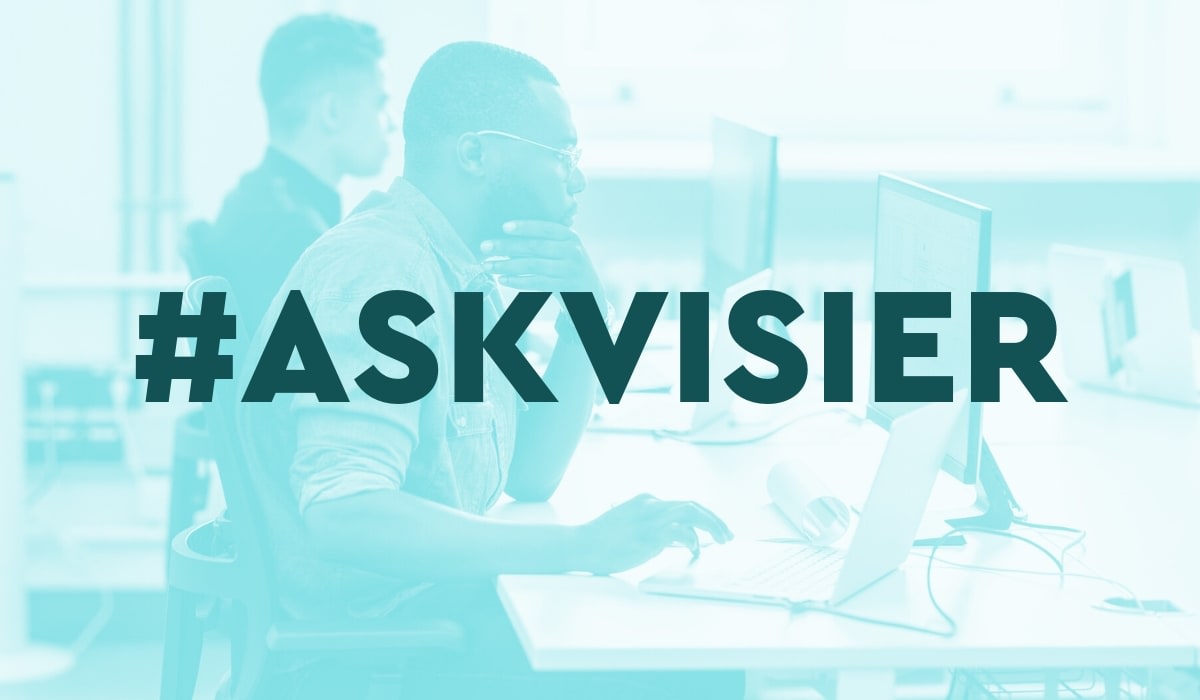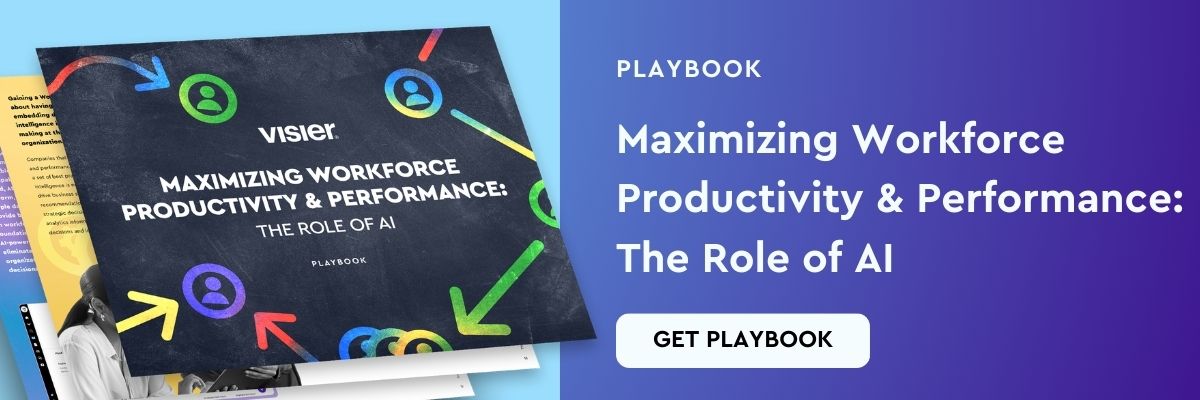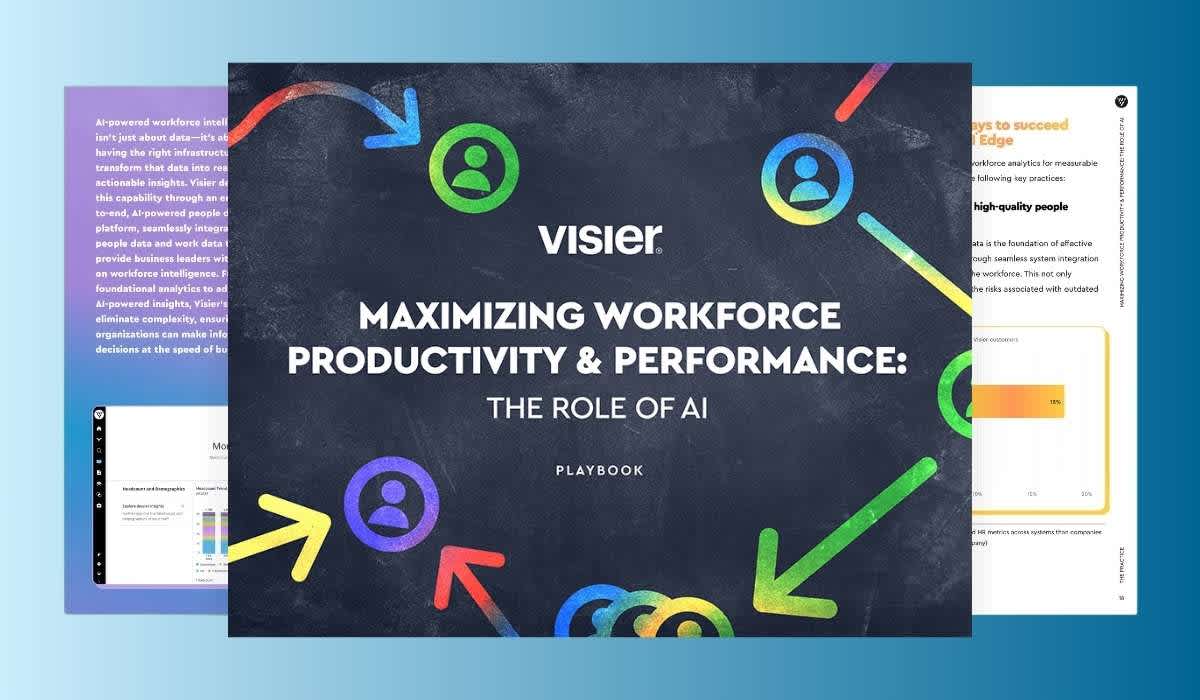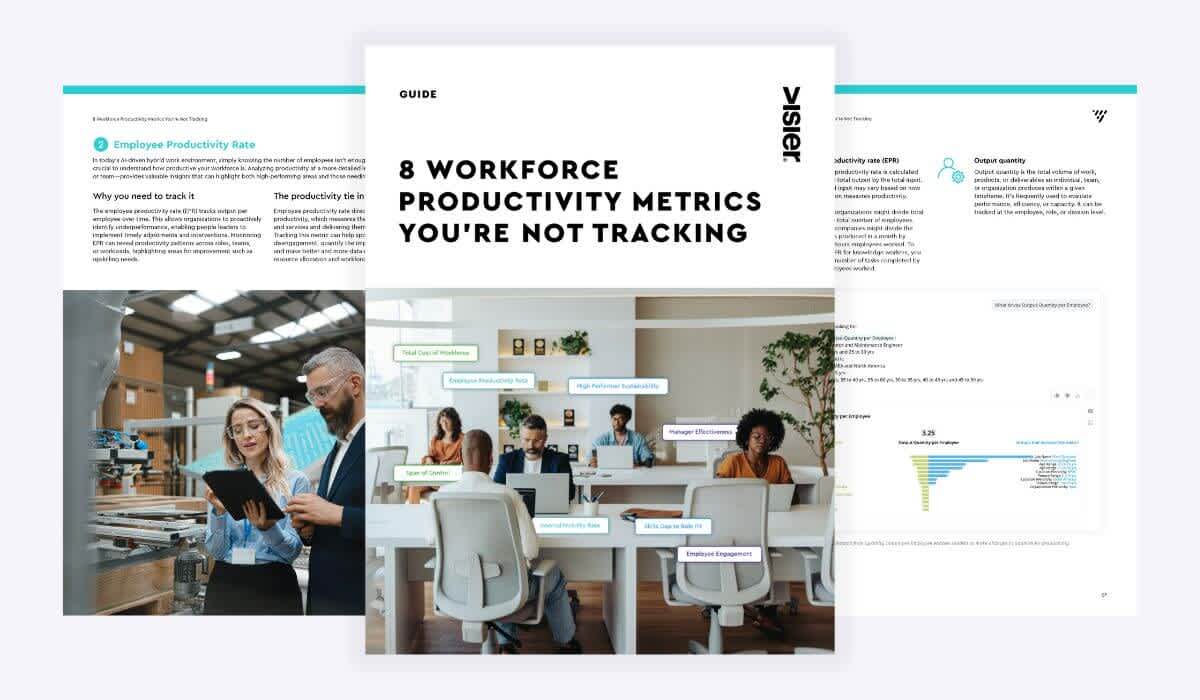Ask Visier: What is the Average Time to Productivity?
Companies spend a lot of time and resources on onboarding. But no matter what skills new employees come with, everyone has to ramp up to full productivity. How do you determine the average time to productivity and why is this important?

Companies invest heavily in hiring bonuses and onboarding programs, yet every new employee, regardless of their skills, takes time to reach full productivity. Measuring the average time to productivity is crucial for understanding workforce efficiency, optimizing training, and reducing costs. But how do you accurately track the average time to employee productivity—and why does it matter?

Why should leaders track average time to productivity?
Knowing the average time to productivity is a key part of knowing the true cost of replacing someone in your organization. And while many people use connections and networking to find good candidates, it’s important to get an accurate measurement of a new hire’s skill to remove potential bias.
For example: one customer, a healthcare provider, had a shortage of nurses. By bringing in their HCAP score (a metric of how effectively nurses are performing their jobs) alongside Visier data, HR professionals can begin to analyze questions such as “Are our programs biased in that it takes different genders or ethnicities different amounts of time to reach their potential?”
How measuring people data helps improve employee productivity
Start by measuring productivity goals. To measure average productivity goals, first, sit down with the training plan and ask the hiring manager about the key performance indicators (KPIs) for success in the role. KPIs that management might measure for a technical support analyst might include how many tickets they can close per day. For an account executive, product knowledge may be a better indicator of productivity than the amount of sales that were made.
Once we have an idea of what really drives the productivity of a role, we can put parameters in place to see how quickly new hires are reaching productivity. Testing is an excellent way of getting good quantitative results. Ideally, if you were to incorporate this ‘skills assessment’ into the hiring phase, you would establish a baseline that can be consistently measured amongst many new hires. The average level of their progress can then be used to begin to understand how long it truly, on average, takes a role to reach full productivity.
There needs to be a balance of qualitative and quantitative data to understand true productivity. An example of qualitative would be asking a new hire ten verbal questions about processes and procedures and listening to their answers. These answers could provide great value, however, as they are non-numerical and open to interpretation, they would likely be considered qualitative. Quantitative could be testing a new hire on their skill set and seeing how they perform on a test with a quantifiable score at the end, removing potential bias around subjectivity. The combination of these gives a good picture of how well someone is performing at their job’s function.
How to track time to productivity with Visier
One of the things Visier makes easy is A/B testing. Once you’ve established your KPI metrics, you have a baseline. Let’s say you want to test a new traning program. With Visier, you can have two cohorts defined, one taking the old training program and one doing the new one, and do an A/B test to see if your newly defined program is really better. Being able to go to your business leaders and show the actual data in support of your hypothesis is valuable. Without Visier, this would be a very complex exercise that might need additional skills to perform the job. With Visier a strong champion could easily perform this rigorous analysis.
Visier reduces the challenge to find out how fast new hires are reaching expected levels of productivity. Once you load the data, you can ask it any question and get these KPIs loaded and you can find out who scores well and when they achieve milestones and divide them into different groups. You can uncover when something is working, have location-specific breakout groups, and measure trends over time. Knowing the answer to “What is the average time to productivity?” will give your organization a better picture of the onboarding journey.
Read more about employee productivity
Boosting employee productivity means creating the right environment for employees to thrive. Learn how to make employees more productive here.
Knowing how to measure employee productivity is critical to ensuring optimal performance results. Learn how here.
Executing a deliberate talent development strategy helps to align employee development and skills with company needs. Learn seven talent development strategies to boost productivity.



